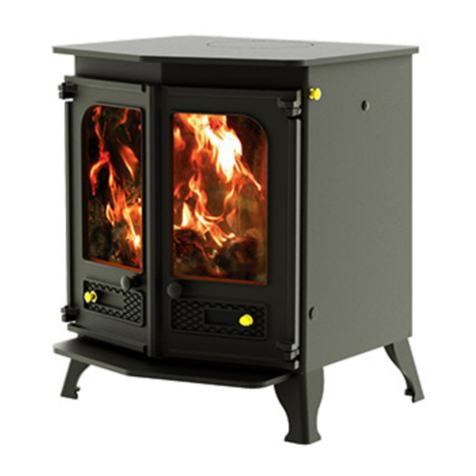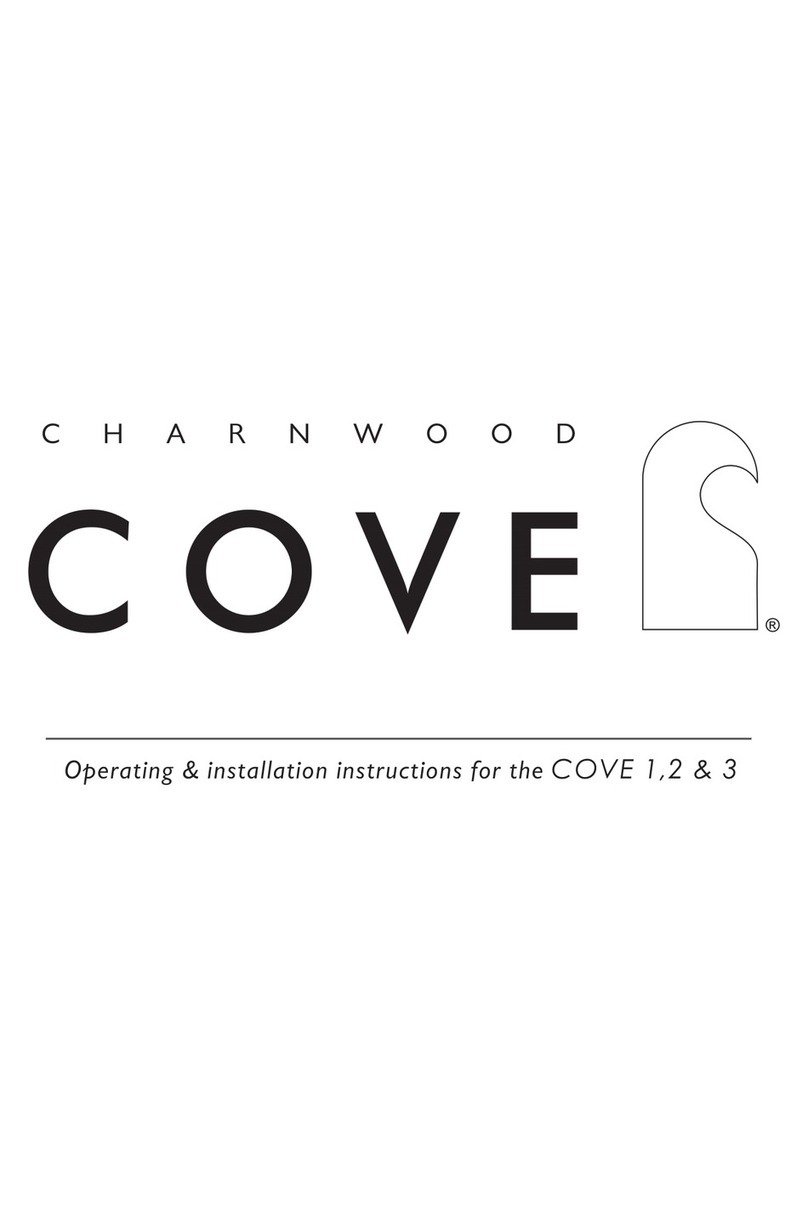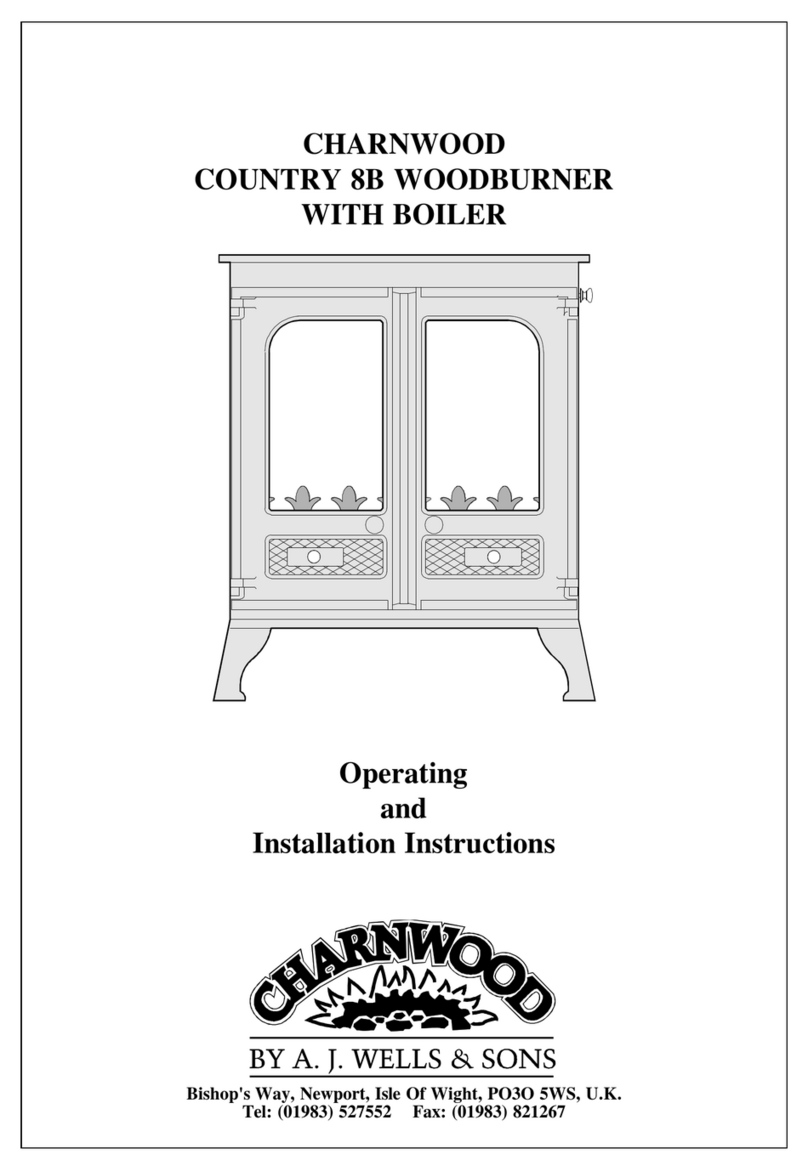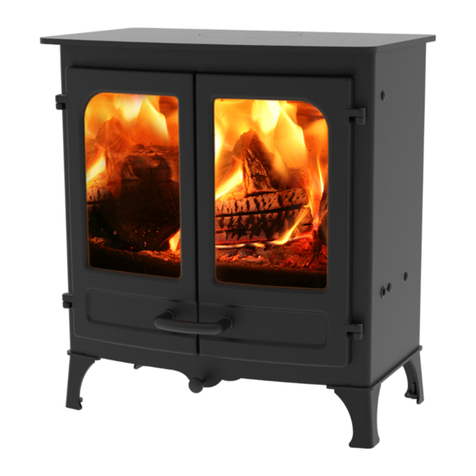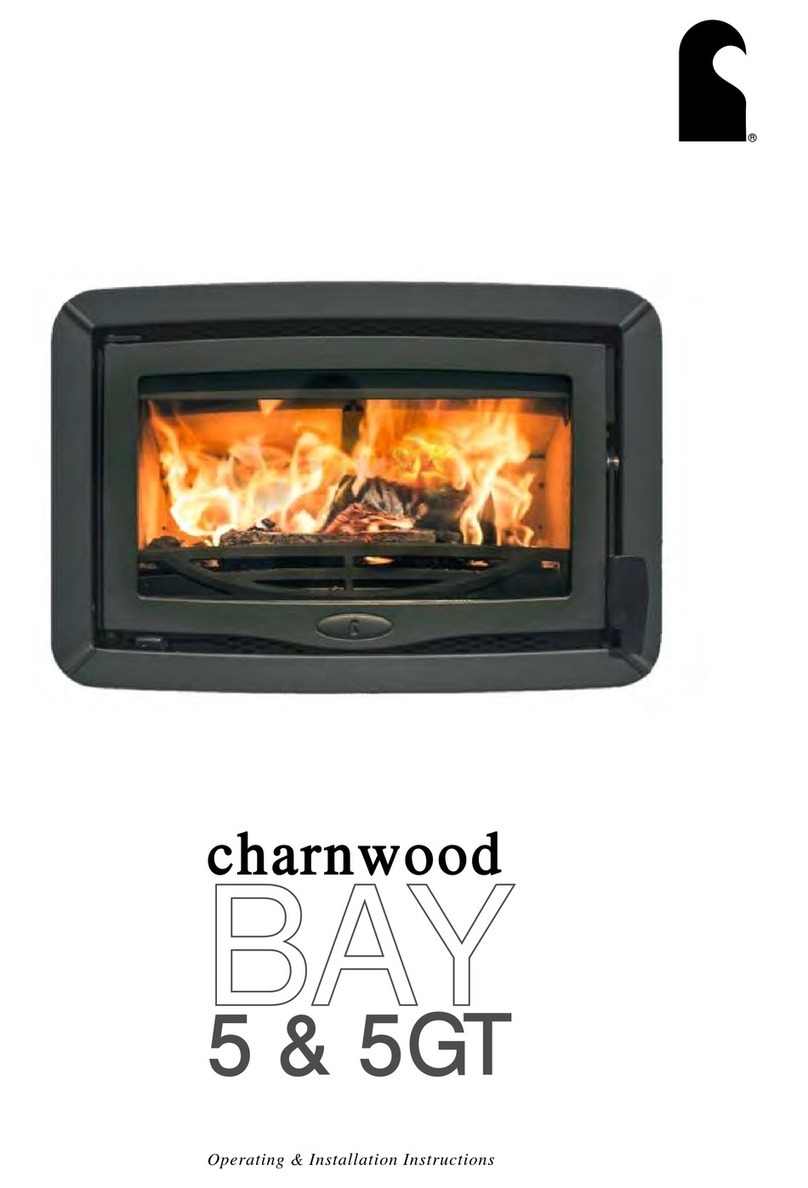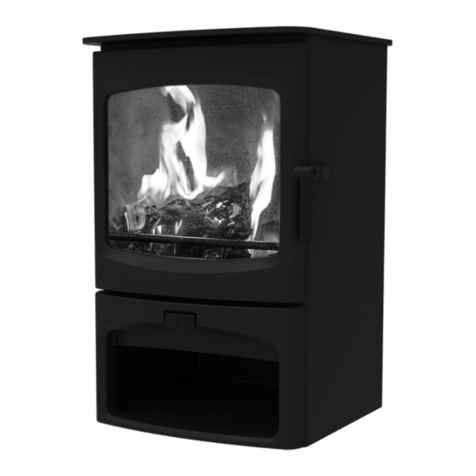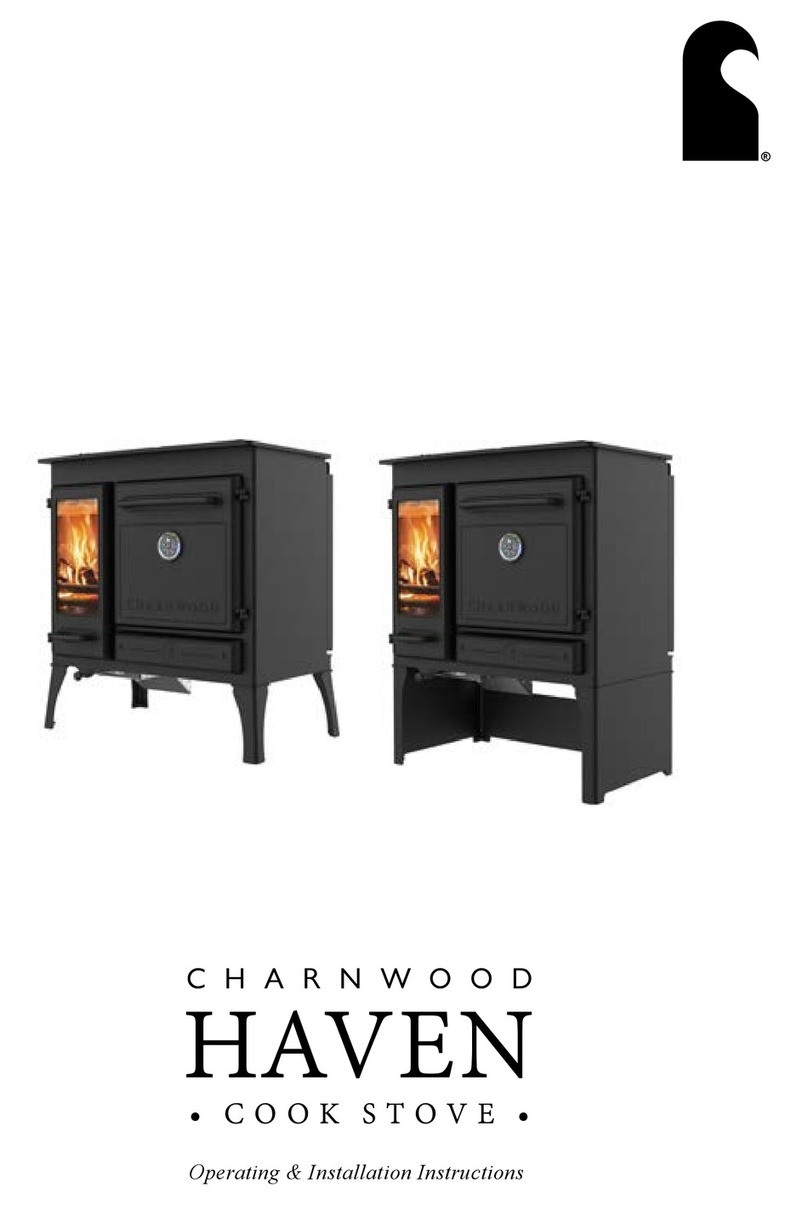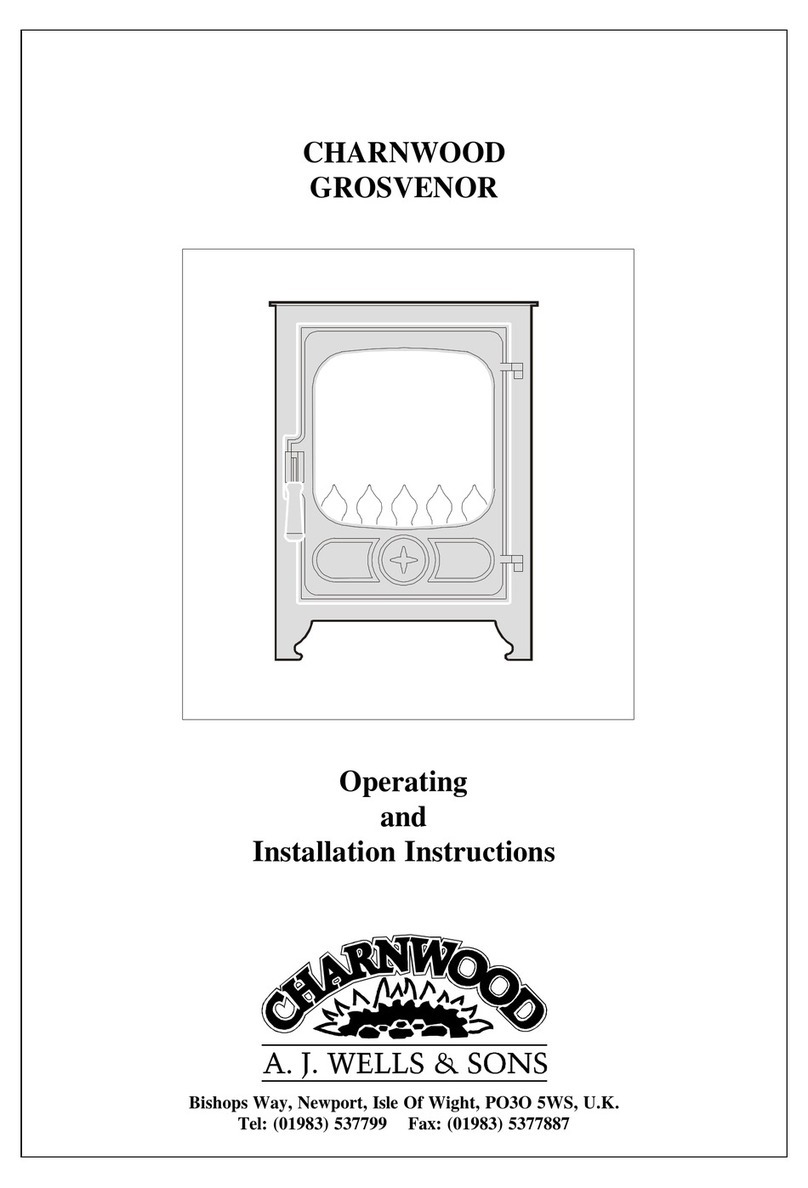When the fire is burning well load on
more fuel as necessary and turn the
control knob to the desired setting.
THROAT PLATE AND
FLUEWAY CLEANING
It is important that the throat plate,
(shown in Fig. 3.) and all the
appliance flueways are kept clean.
They should be cleaned at least
monthly, and more frequently if it if
found necessary.
The throat plate and flueways may be
cleaned with alow fire still burning.
Use the scraper tool to scrape any
sooty deposits to the front of the plate
until they fall off into the fire. Check
that all soot deposits have been
removed from the back of the plate, it
may sometimes be necessary to let the
fire out and remove the plate to clean
it thoroughly.
More soot will be deposited on the
throat plate and in the flueways if the
appliance is run at low levels for long
periods. If this is the case then more
frequent cleaning will be necessary.
CLEANING AND
MAINTENANCE
The appliance is finished in vitreous
enamel. To clean the surfaces simply
wipe over with adry cloth. Abrasive
pads and scouring cleaners must not
be used as these will damage the
finish. Care should be taken not to
knock the enamel with hard objects
as it will chip.
The glass in the doors is aspecial
ceramic glass which will withstand
the heat of the fire. Before cleaning
the glass open the doors and allow
them to cool. Clean the glass using a
damp cloth and then wiping over
with adry cloth. Any stubborn
deposits on the glass may be removed
with aproprietary fire glass cleaner
or ceramic hob cleaner. Some
deposits on the glass may be burnt off
simply by running the fire at afast
rate for afew minutes. Do not use
abrasive cleaners or pads as these can
scratch the surface which will weaken
the glass and cause premature failure.
Aerosol spray cleaners should not be
used near the appliance whilst it is
under fire.
If the fire is going to be out of use for
along period (for instance in the
summer) then to prevent condensa-
tion, and hence corrosion, the
thermostat should be left at the
maximum setting and the main doors
left ajar. It is also advisable to sweep
the chimney and clean out the fire.
After long periods where the fire has
been out of use, the chimney and
appliance flueways should be cleaned
before lighting.
For the fire to operate correctly it is
important that the door seals are in
good condition. Check that they do
not become worn or frayed and
replace them when necessary.
CHIMNEY SWEEPING
The chimney should be swept at least
twice ayear.
First remove the front firebars and
the throat plate. Then sweep the
chimney ensuring that soot is
removed from all horizontal surfaces
after sweeping.
After clearing any soot from within
the fire, replace the throat plate and
the front firebars.
Different types of sweeps brushes are
available to suit different flueways.
For standard brick chimneys awire
centre sweeps brush fitted with a
guide wheel is recommended. For
prefabricated insulated chimneys the
manufacturers instructions with
regard to sweeping should be
consulted.
TROUBLE SHOOTING
Fire Will Not Burn.
Check that:
a) the air inlet is not obstructed in
any way,
b) chimneys and flueways are clear,
c) asuitable fuel is being used,
d) there is an adequate air supply into
the room,
e) an extractor fan is not fitted in the
same room as the fire.
Fire Blazing Out Of
Control.
Check that:
a) the doors are tightly closed,
b) the air control knob is turned
down to the minimum setting,
c) the air inlet damper is closed (at
the bottom left of the appliance), and
that it is not prevented from closing
completely by apiece of ash,
d) asuitable fuel is being used,
e) the door seals are in good
condition.
Fume Emission.
Warning Note: Properly installed
and operated this appliance will not
emit fumes. Occasional fume from
de-ashing and re-fuelling may
occur. Persistent fume emission is
potentially dangerous and must not
be tolerated. If fume emission does
persist then the following
immediate actions should be taken:
A) Open doors and windows to
ventilate the room.
B) Let the fire out and safely
dispose of fuel from the appliance.
C) Check for flue or chimney
blockage, and clean if required.
D) Do not attempt to relight fire
until cause of fume has been
identified, if necessary seek
professional advice.
The most common cause of fume
emission is flueway or chimney
blockage. For your own safety these
must be kept clean.
Freezing
Do not light the fire if there is any
possibility that any parts of the
heating system may be frozen.
Page 4
RV 9/98

